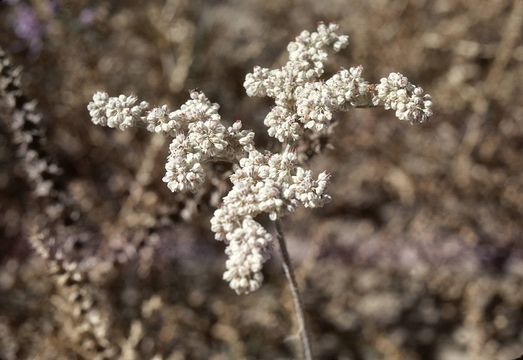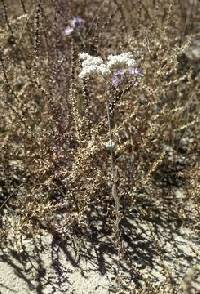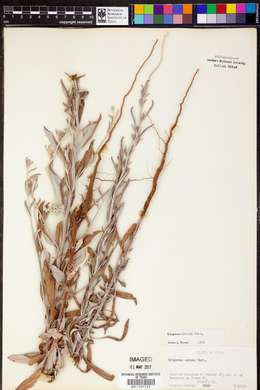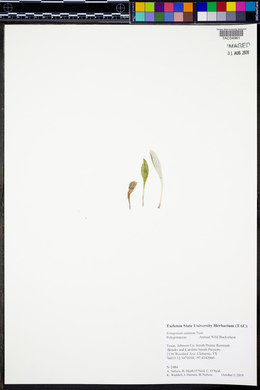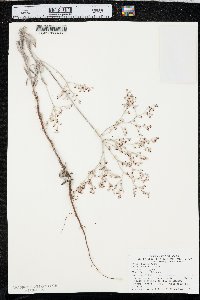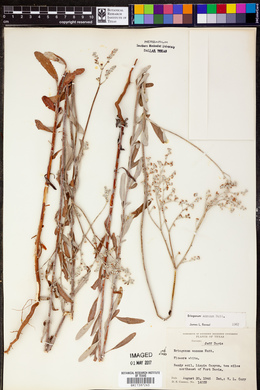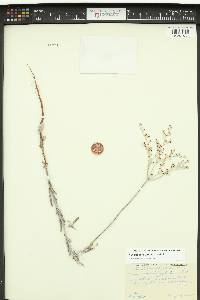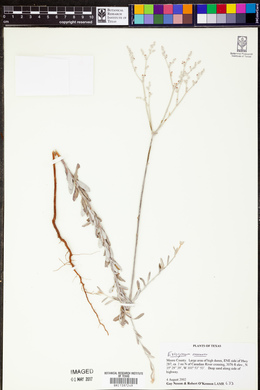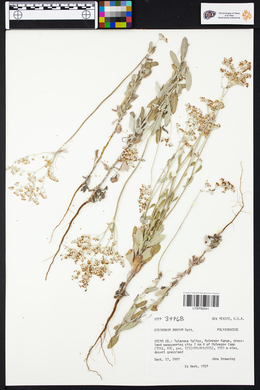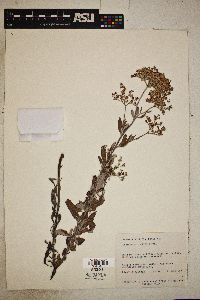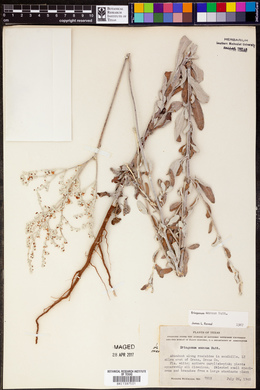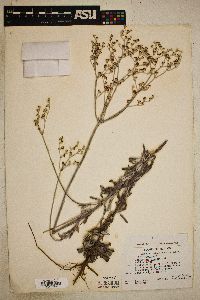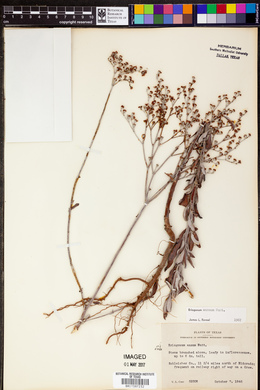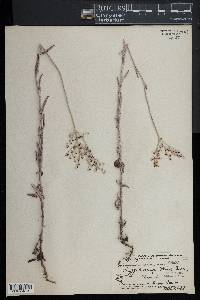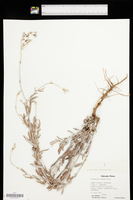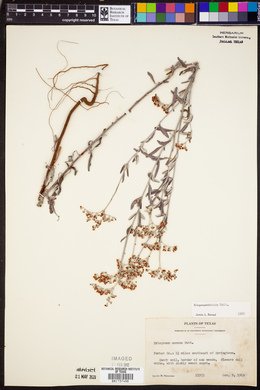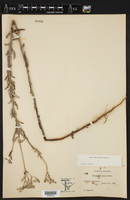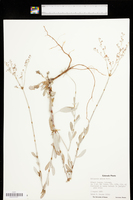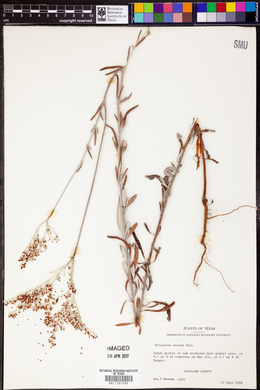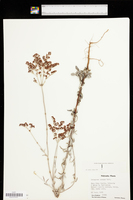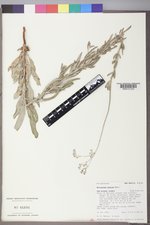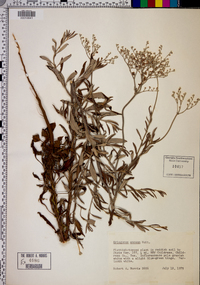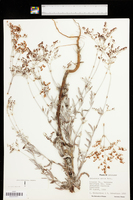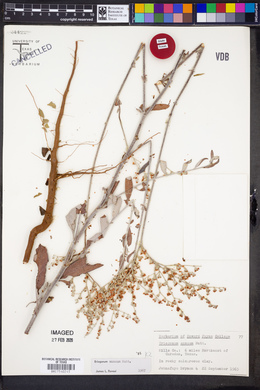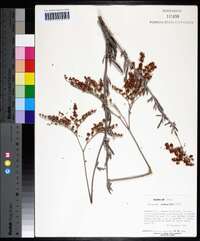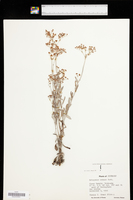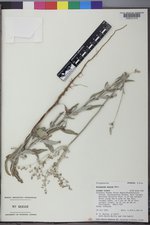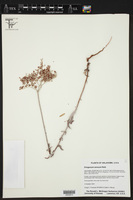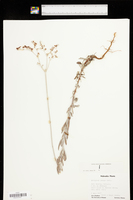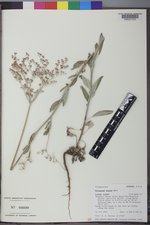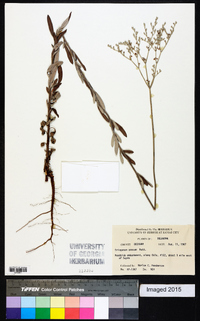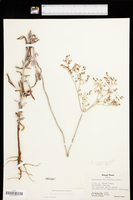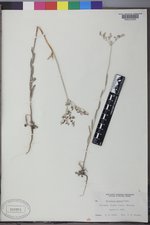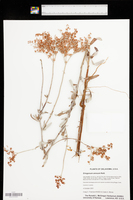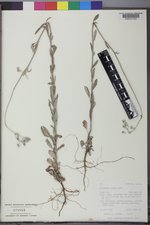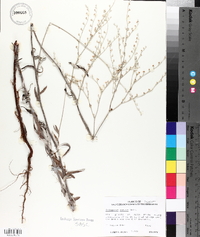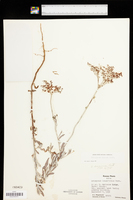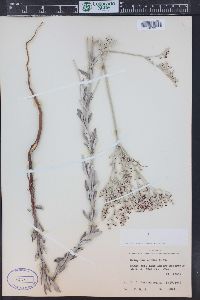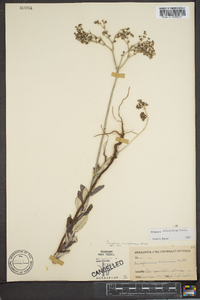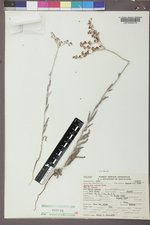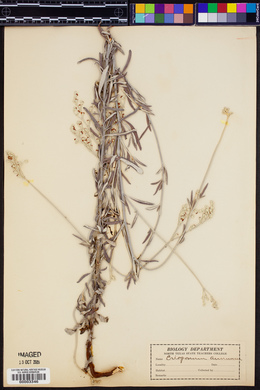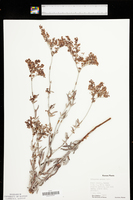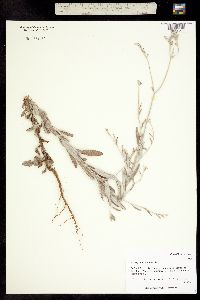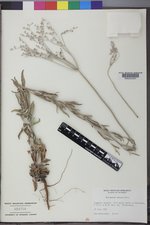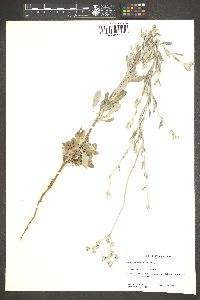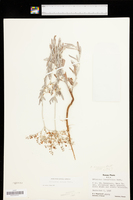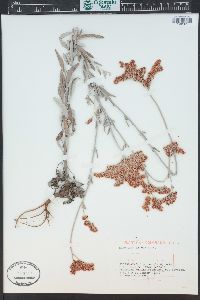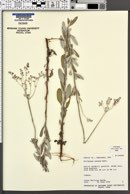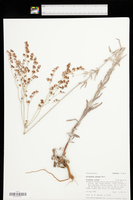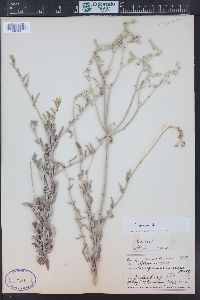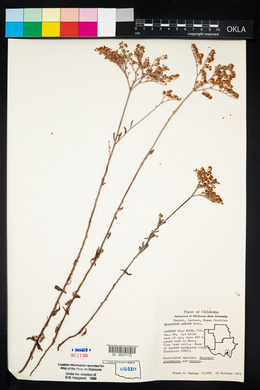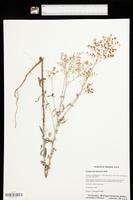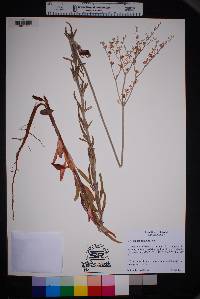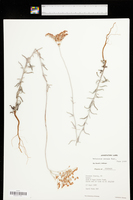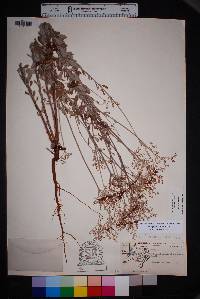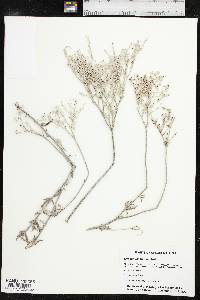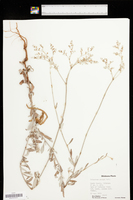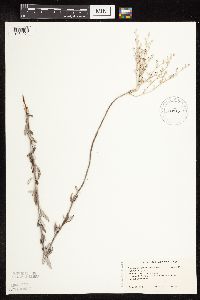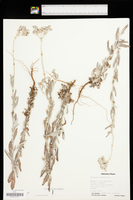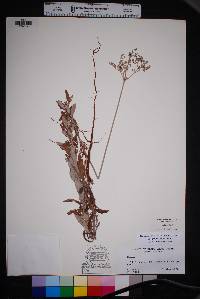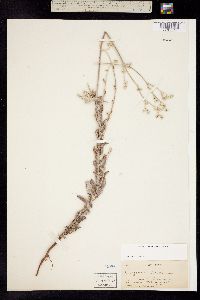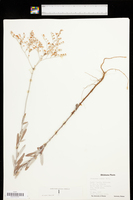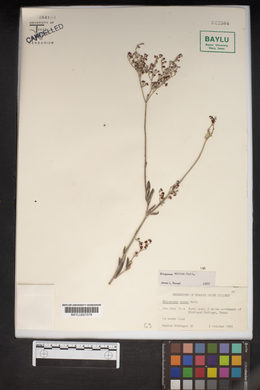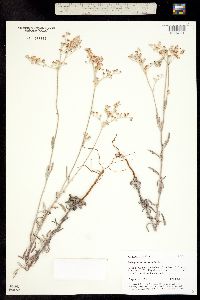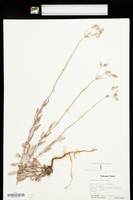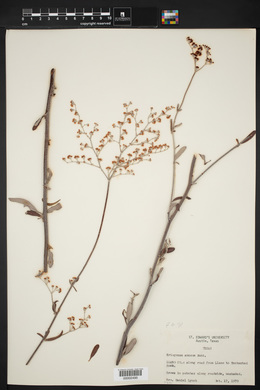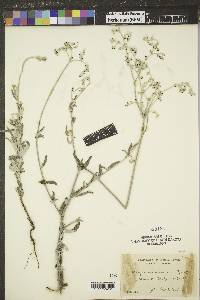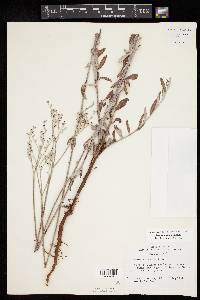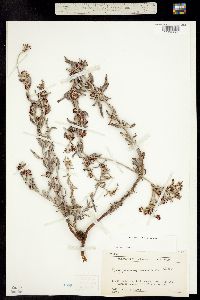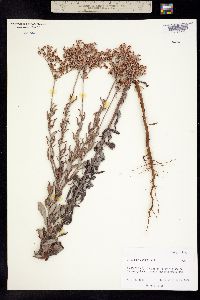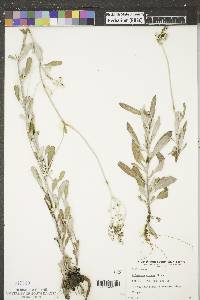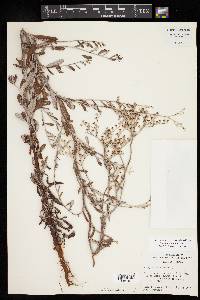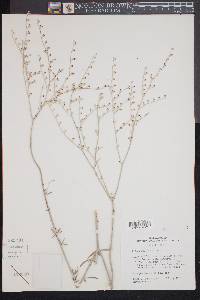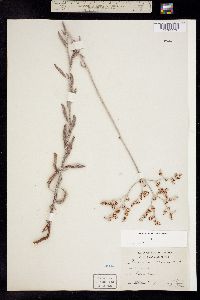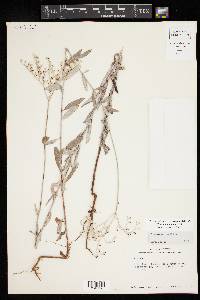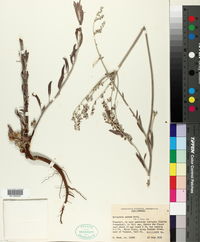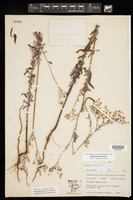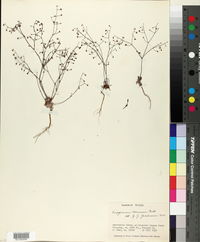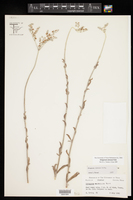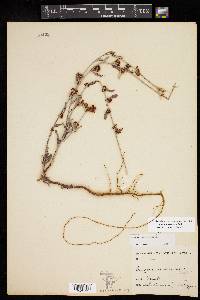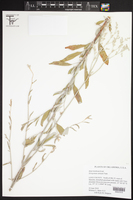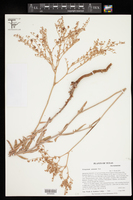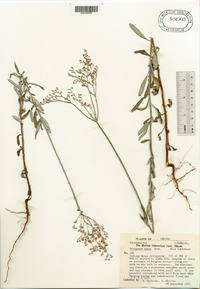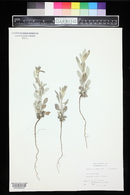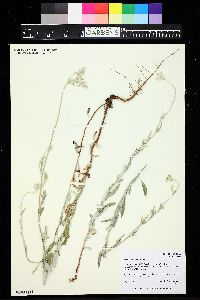
|
|
|
|
Family: Polygonaceae
annual buckwheat, more...Annual Wild Buckwheat, annual eriogonum, annual wildbuckwheat, umbrella plant, wild buckwheat
[Eriogonum cymosum, moreEriogonum hitchcockii , Eriogonum lindheimerianum Scheele] |
Herbs, 5-20 × 5-10 dm, grayish. Aerial flowering stems slender, 4-10(-15) dm, floccose to densely tomentose. Leaves: petiole (rosette) 0.3-1.2 cm, or petiole (cauline) 0.2-0.5 cm, tomentose to floccose; blade oblanceolate to oblong, 1-7 × 0.3-1.5 cm, densely tomentose abaxially, floccose adaxially not thickened and auriculate-subclasping proximally; margins entire or slightly revolute. Inflorescences 3-10 × 2-7 cm; bracts triangular, 1-4 mm. Peduncles 0.1-0.5 cm, tomentose to floccose. Involucres turbinate to campanulate, 2.5-4 × 2-3 mm, tomentose to floccose abaxially, glabrous adaxially; teeth 5-6, 0.4-1 mm. Flowers 1-2.5 mm; perianth white or cream to rose; tepals: those of outer whorl obovate, 1-2 × 0.9-1.5 mm, those of inner whorl narrowly ovate to oblong, 1.5-4 × 1.2-1.8 mm; stamens usually included, 1-2 mm. Achenes 1.5-2 mm. 2n = 40. Flowering Apr-Nov. Sandy flats, slopes, dunes, and banks, mixed grassland, oak and conifer woodlands; (0-)100-1900(-2300) m; Colo., Kans., Mont. Nebr., N.Mex., N.Dak., Okla., S.Dak., Tex., Wyo.; Mexico (Chihuahua). Eriogonum annuum is widespread and common to locally abundant or even weedy on the Great Plains of the central United States and extreme north-central Mexico. It was collected in Sherburne County, Minnesota, in 1982, but that population did not persist. The species was recently found as an introduction at Sandy Hook in Monmouth County, New Jersey (Snyder & McArthur s.n., NY), but its fate there remains to be determined. Unfortunately, this weedy species recently has been introduced into northern Arizona as a roadside wild flower. C. L. Perez et al. (1998) have demonstrated that the seed bank can be rich in seeds of this species, but germination rates are low. The Lakota people traditionally used the annual wild buckwheat as an aid in the treatment of sore mouths in children, seemingly in association with teething (D. J. Rogers 1980). Leaves were used to stain buffalo and deer hides by the Kiowa (P. A. Vestal and R. E. Schultes 1939). Vestal (1952) stated that the species was considered a 'life medicine' by the Navajo (Diné) people; it was used also for protection against witches. It is likely that E. annuum was obtained by the Navajo through trade, but it might have been grown locally in historic times where the species recently has been reintroduced.
Heil et al. 2013, Allred and Ivey 2012, FNA 2005, Martin and Hutchins 1981 Duration: Annual Nativity: Native Lifeform: Forb/Herb General: Annual to biennial herb, 50-200 cm tall, from a taproot; stems erect and leafy, usually solitary and branching only in the inflorescence, densely tomentose. Leaves: In a basal rosette when young, this often withering before flowers appear; stem leaves alternate, and usually clustered in fascicles; blades oblanceolate, 1-7 cm long and 3-15 mm wide, densely hairy, with the underside more densely gray-hairy than the upper surface. Flowers: White to pink, arranged in tight clusters of several flowers held together by a tomentose cup-shaped structure called an involucre; involucres arranged in a broad flat-topped inflorescence 30-100 cm high and 20-70 cm wide, located at the top of the stem; each individual flower is 1-3 mm long, with 6 petal-like tepals, these white to rose-colored. Fruits: Achenes trigonous, 2 mm long, brown and glabrous. Ecology: Found in sandy soils, dunes, and roadsides, from 3,500-8,000 ft (1067-2438 m); flowers April-November. Distribution: Great Plains, from MT and ND south to NM and TX Notes: This annual Eriogonum is distinguished by being tall and quite erect, with one or just a few stems per plant; the stems and oblong leaves are covered with fine woolly grayish hairs. Each stem is topped with a wide, flat-topped inflorescence (cyme) with clusters of small white or pink-tinted flowers located mostly at branch tips and forking points. Somewhat similar to E. polycladon, but that species has stems that are usually more diffusely branched, and the inflorescences are composed of multiple racemes (with flowers all along the branches); the racemes are sometimes arranged in a somewhat flat-topped inflorescence, but more often the inflorescence on E. polycladon is long, leggy, and narrow. Ethnobotany: Used to treat sore mouths, especially when children were teething; leaves used to stain buffalo and deer hides; also used ceremonially. Etymology: Eriogonum is from the Greek erion, wool, and gony, knee, alluding to the hairy nodes of the first species described, E. tomentosum; annuum alludes to the annual life span, because this was the first annual species in the genus that was formally described for science. Synonyms: Eriogonum cymosum, Eriogonum hitchcockii Editor: AHazelton 2017 |
This project was made possible in part by the Institute of Museum and Library Services [MG-70-19-0057-19].
Powered by Symbiota

